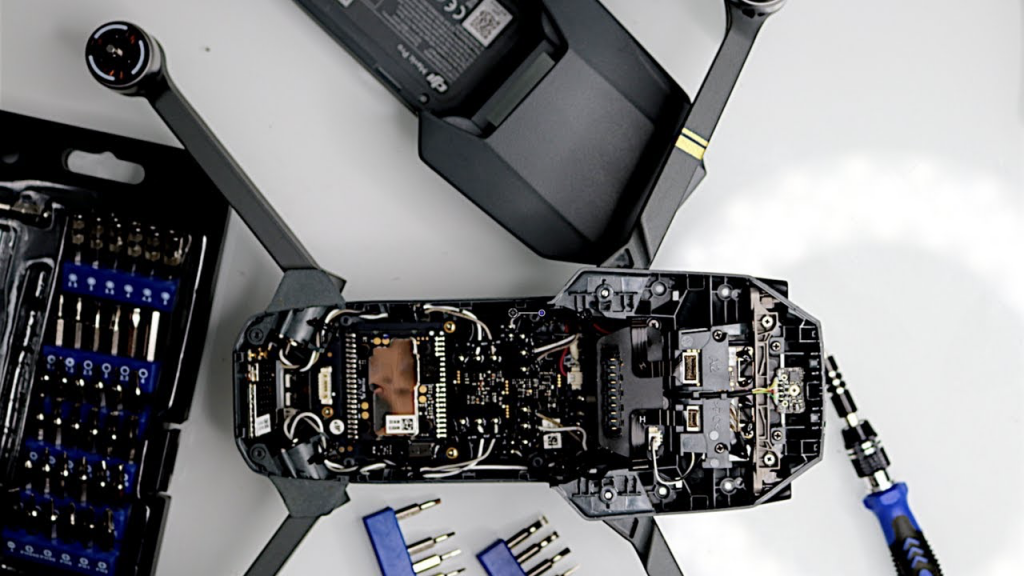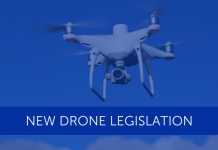How To Fix A Drone That Won’t Take Off?
Table of Contents
Modern consumer drones are fitted with a number of safety systems that are designed to protect both the drone and others from harm. These safety systems, although intelligent, may sometimes produce errors and prevent your drone from taking off. We will be talking through some different reasons why this may happen, and suggesting solutions to get your drone back in the air.
Possible Reasons Your Drone Won’t Take Off
No GPS Positioning
GPS or Global Positioning System is a group of satellites in space that your drone will connect to, before taking off. These satellites tell the drone exactly where it is located on earth. You can read more about the uses of GPS in our article here.
Some drone manufacturers such as DJI have settings within their software that mean the drone will not be able to take off in GPS mode unless the drone is locked onto a minimum of eight satellites. In this case, your DJI drone may display a yellow bar at the top of your application screen.
Although your drone will take off, it will be unable to hold its position in the sky with no GPS locked and so will be more susceptible to drifting and wind. DJI calls this mode ATTI Mode and although this is nothing to worry about, we would suggest waiting until your drone has locked onto a minimum of eight satellites before taking off. At which point, the previously yellow bar will turn green and display the words GPS Positioning.
IMU Error and How To Fix

The IMU stands for Inertial Measurement Unit. This is a device mounted inside the drone that is responsible for ensuring the drone is responding correctly with regards to movements and hovering. It uses data from an internal accelerometer and gyroscope, to make sure that the drone is responding to commands correctly. The accelerometer measures and checks that the drone is accelerating and decelerating correctly, whilst the gyroscope ensures that the drone is turning and tilting the correct amount, in response to the input by the user.
This error will be displayed at the top of your app with a red triangle. You may find you have errors appearing with your IMU if you have had a crash with your drone. The error may also appear without a crash but will require calibration before flight. You can easily recalibrate your IMU on a DJI drone, by clicking the text next to the DJI logo in the top left corner of your app.
This will bring up a menu, which shows the status of all the safety systems onboard your drone. Going down the list, you will see the IMU. On the right-hand side, there will be a calibrate button if an error has been detected. Click this and follow the on-screen instructions to recalibrate the IMU on your drone.
Drone Compass
The compass inside your drone will regularly need calibrating, whenever you are flying in a new location. This is needed because the earth’s magnetic field varies across the world, and may be different from where your compass was previously calibrated. Not doing so can result in issues with flying.
Despite this, sometimes, your drone may show an error that reads Magnetic Interference. This is normally due to metal or magnets disorienting the compass. The best way to deal with this is to move to another location nearby, and attempt to recalibrate the compass here in the hope that there is less metal in the surroundings. It should be noted that flying near metal objects whilst in the air can also disorientate the compass and so fly with caution.
Similarly to the IMU calibration, the compass is calibrated within the app on DJI drones. Once again, this can be reached by clicking the text next to the DJI logo in the top left corner and clicking the calibrate button next to ‘Compass’. You should follow the onscreen instructions as best you can to ensure the calibration is successful. Although this may seem an odd thing to do, you should always calibrate your compass properly, before every flight in a new location.
Drone Battery Issues

Most consumer drones available today use Lithium-Ion Polymer (LIPO) batteries. These batteries are used because they are able to hold a significant charge for the physical size and weight of the battery, therefore making them ideal when size and weight are crucial to the design of a drone. However, these batteries are fragile and suffer from issues. A LIPO battery is made up of multiple cells. These cells must all maintain a constant voltage, otherwise, the battery will become useless. There are a number of ways this can be prevented.
You should never store your drone batteries for long periods of time at a low charge. This will result in inconsistent voltages and ruin your batteries. DJI market their batteries as ‘Smart Batteries’ that contain a circuit designed at prolonging the life of your drone’s batteries. After a specified number of days, the battery will self discharge down to a safe level (70%) and will hold this charge level to prevent damage. Despite this, you should still discharge and charge your batteries every two to three months to prolong life as much as possible.
If your drone displays a battery error, and you are confident that the battery is fully charged. You should check the cell voltage levels. If using a DJI drone, this can be checked by going into the DJI app, and clicking the three dots in the top right corner of the app. On the left of this menu, you will see seven logos. The fifth logo down shows a battery with a navigation error in front of it. Click this and you should be able to see the voltage levels of your battery.
There should be no more 0.1volts difference. Although there is no official way of fixing this. Pilots online have reported fixing this by discharging the battery as low as possible, and then recharging, and repeating until the levels are equal. It is important you check this before leaving the house, as there is no way of flying using a defective battery.
With some of DJI’s products, the drone has been known to produce a ‘Warming Up’ message, before allowing the pilot to take off. This message is another safety system that is once again related to the batteries. Batteries, in general, operate best when they are warm. Cold and Hot batteries can affect the capacity and in this case, flight time.
The Inspire series from DJI is able to fly in significantly colder temperatures than that of the Mavic Series. This is because the drone will actively keep the batteries warm, even when flying in sub-zero temperatures. This feature was not implemented into the Mavic consumer line and so, unfortunately, sometimes you may need to just wait for the drone to warm up the batteries before taking off.
NFZ
All drones fitted with GPS should advise before taking off if you are located within a No-Fly-Zone. These can include airports, prisons and stadiums, and should always be obeyed. Flying inside a No-Fly Zone without permission could result in a large fine and possibly a criminal record. You could also be putting others at risk if you ignore any warnings. You should ensure that you check if the area you are flying in is included in an NFZ, before leaving the house to prevent disappointment.
If you have been caught out and find yourself accidentally trying to take off in an NFZ, you should change the location and find somewhere else to fly to prevent any damage to your or someone else’s property.
Drone’s Firmware Update

As with any tech, you should always ensure that you are running the latest firmware. This is because a new version of the firmware could patch problems that have occurred in previous firmware versions. This problem could be anything from your app not working, to not correctly registering the take-off location, meaning you could be putting your drone at risk should an issue occur whilst in the air.
Your drone should always advise you to update if a new update has been released. Once again, you should always check if a firmware update is available before you leave the house. This is so that you are not sat waiting for an update to download, whilst using up the battery, with no means of recharging.
We have covered the most common reasons why your drone may not take off, and we hope that these solutions get you back up in the air and flying as soon as possible.







